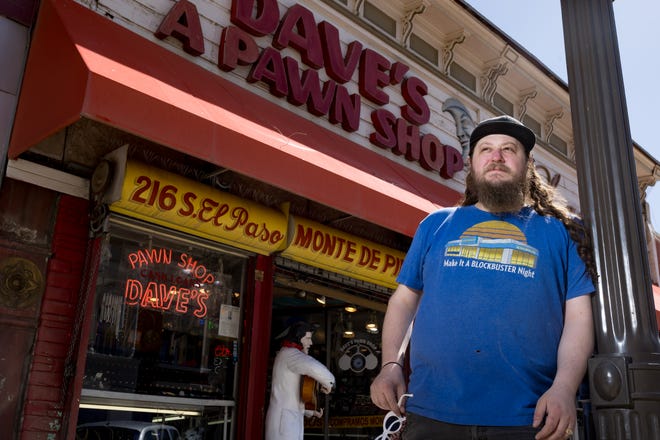
EL PASO, Texas – Clay Baron has everything in his pawn shop from gold rings and pearl necklaces to vintage cowboy boots, silver belt buckles, stereos and ticking clocks.
The only thing he’s short on is space. “Right now we have a glut of inventory,” Baron said, “which tells me that our clientele doesn’t necessarily have money.”
Accumulating pawn shop inventory means fewer buyers than sellers – a sign that for the lowest-income Americans, times remain tough.

President Joe Biden is trying to persuade Americans that the economy is on the upswing, and he has been touting economic indicators that he says prove it: easing inflation, rising job growth and wages, unemployment near record lows, a surging stock market.
But the president’s rosy economic picture hasn’t reached everyone.
Prep for the polls: See who is running for president and compare where they stand on key issues in our Voter Guide
Two years of steep inflation has hit working families hard, especially those living paycheck to paycheck.
Baron’s store – called Dave’s – is an icon of downtown El Paso. Outside, an Elvis statue stands with a permanently cocked hip and a guitar in hand, while the King’s hits blast onto the street.
The shop, which his family has owned for four generations, sits at an economic borderline.
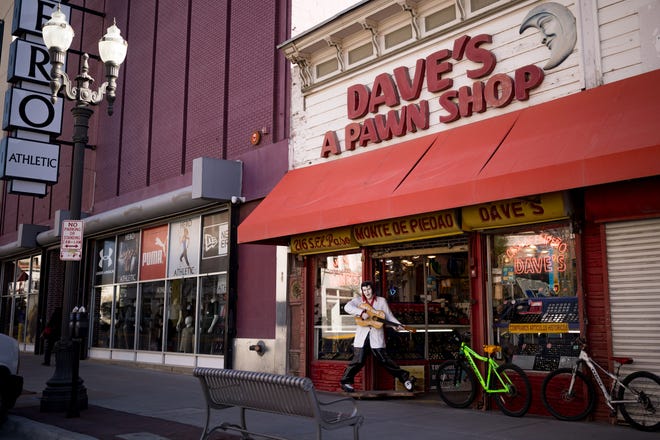
One block north, in the heart of a revitalized downtown, tourists and locals can pay $200 a night to stay at one of El Paso’s fanciest hotels, smoke a $45 cigar and drink craft cocktails at a bar covered by an original Tiffany stained-glass dome.
One block south, shoppers wheeling metal carts flock to buy made-in-China knockoff purses, discount lingerie and sportswear, and other items both retail and wholesale.
It’s an urban metaphor for the U.S. economy’s uneven recovery.
Some Americans – people with retirement plans, savings and stock holdings – may gripe about inflation and the economy, but they’re doing all right.
Others are surviving pawn to pawn.
‘American households do not have $1,000’
The pawn shop, for those who don’t have a credit card or a bank account, acts like a sort of rainy day fund.
Pawn shop owners like Baron lend money to customers, secured by the item pawned. They hold the merchandise in safekeeping during the term of the loan, and sometimes a grace period, until the customer pays back the loan plus interest and fees.
Loans typically last 30 to 90 days. But right now, customers are pawning and not coming back to reclaim their rings or belt buckles.
“Pawn balances have risen across the country in the past two years, said Laura Wasileski, spokeswoman for the National Pawnbrokers Association.
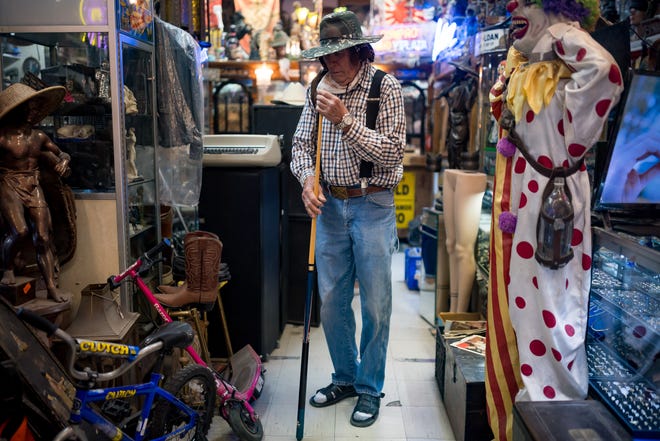
The reasons, she said, include “cost-of-living increases, the lack of access to credit, short-term emergencies, and the fact that 50% of American households do not have $1,000 in savings to cover those emergencies.”
Nearly 6 million, or 4.5%, of households in the U.S. had no bank account in 2021, according to the latest survey data available from the Federal Deposit Insurance Corp., the agency that insures the banking system.
People of color, those with less education, lower incomes, disabilities and single-mother households were more likely to lack bank access, according to the FDIC.
A fifth of survey respondents said they didn’t keep a bank account because they didn’t have enough money to meet the minimum balance requirements ‒ often $100 to a few hundred dollars.
A repeat customer tries to beat inflation
At Baron’s shop one recent afternoon, Arturo Washington was less worried about minimum balance requirements than he was about filling his gas tank.
Washington, 74, leaned into the pawn counter and asked what he could get for putting up an electric guitar. Over his head a neon sign glowed in Spanish with the words “I buy gold and silver.”
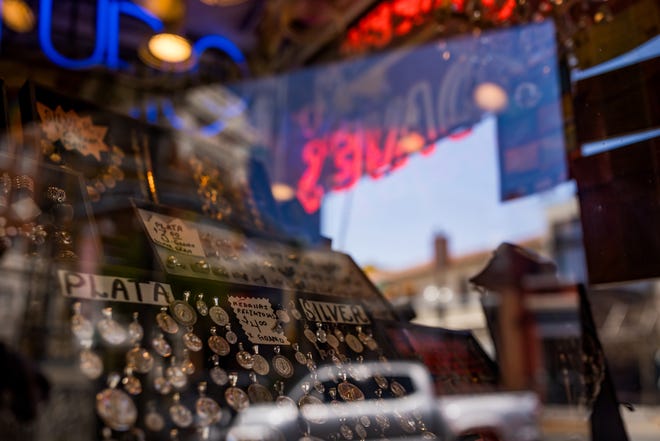
The retired repairman knew the pawnshop clerk by name. He had been a customer at Baron’s shop for nearly 20 years. The clerk offered him $300 for the guitar. A gentle negotiation ensued.
“Could you give me $350 today?” Washington asked.
He had to make an hour’s drive for some appliance parts, he told her, and needed a full tank of gas, plus money for the parts. Sweetly, the pawnshop clerk said she couldn’t give him that much, but she’d bump him to $325. Washington thanked her and walked out with his cash.
“Sometimes I get stuck, economically speaking,” he said in Spanish. “So I come and pawn things, and that’s how I make ends meet.”
Big pawnshop companies see inventory rise
What Baron sees from the counter of his family-owned store tracks with national trends.
“When times are good and people have money, there’s going to be more money coming in. People will be buying the stuff,” Baron said. “When people need money, there’s going to be more money going out of the store, which is what’s happening now.”
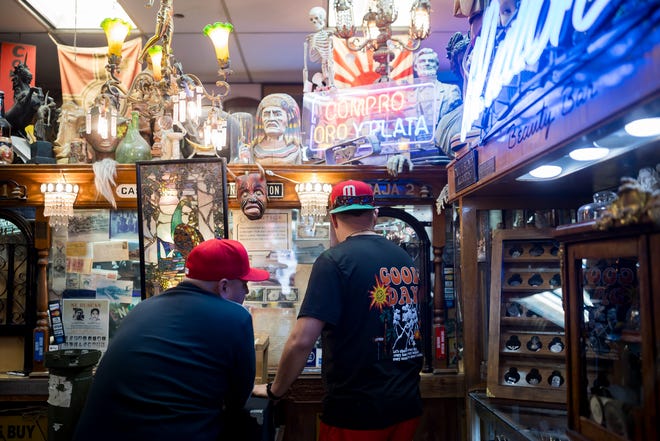
Two of the largest, publicly traded pawnshop corporations in the U.S. – which between them own roughly 1,700 pawnshops nationwide – are also reporting growing inventory and increased demand for short-term loans.
FirstCash Holdings Inc. operates nearly 1,200 pawnshops under the FirstCash and Cash America brands in 29 states and the District of Columbia. The company reported “record pawn receivables” in its most recent year-end earnings report and a 10% increase in inventory at its U.S. stores.
EZCORP Inc. also owns 530 pawnshops in the U.S. and reported an 8% increase in inventory at U.S. stores in the company’s latest earnings report. The “challenging macro-economic backdrop” continued to fuel demand for short-term cash loans, the company said.
The price of gold – which investors turn to as a hedge against inflation – has helped drive up pawn inventory, too, as consumers of varying income levels pawn gold items to cash in on the favorable market price. An ounce of gold hit an all-time record – over $2,200 per troy ounce – this week.
Lime prices a sign of sour economy
Washington, the El Paso customer, blames Biden for his financial constraints. High inflation has hurt people like him on a fixed income, he said.
“For those of us who are retired, the economy is going very badly,” Washington said.
“The cost of basic foods is very, very, very expensive,” he said. “And every day they raise prices more on basic foods. A lime, a small one, is 35 cents. It’s not right.”
Despite trending downward over the past year, consumer price increases accelerated in January and February, according to the Bureau of Labor Statistics, raising concerns that the inflation fight isn’t over yet.
More:Social Security benefits could give you an extra $900 per month. Are you eligible?
Baron, the shop’s owner, tried to pinpoint the moment the economy soured for his customers.
“Definitely since COVID, but even before COVID,” he said, “I don’t want to get political, but even during the Trump administration beginning, people seemed like they were a little dry.”
Lauren Villagran can be reached at [email protected].







